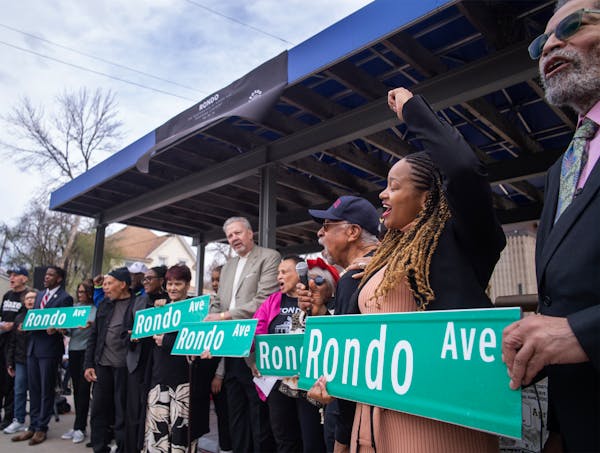As the school year opens, educators have a unique opportunity to harness collective interest in equity and inclusivity. As a mother, a wife in a cross-cultural marriage, a pediatrician and a physician educator, I am hopeful that teaching equity can uplift our communities and dismantle systems of oppression.
This is why I am disappointed in Katherine Kersten's commentary, "When schools teach 'equity,' kids learn fear and anger" (Opinion Exchange, Aug. 29).
I agree with Kersten that existing equity education is imperfect. True equity pedagogy is more than "focusing only on bad things" like deficit-based portrayals of minority groups. Educators must work to develop sophisticated curricula that reflect this complexity.
Yet Kersten's overgeneralizations about equity education prevent progress. Perhaps if she had used reasoned analysis and sought counterevidence to examine her fear of equity education, her critique would have been more thoughtful and well-informed.
Fortunately, there is a large body of literature on equity education, much of which shows potential for positive change. I urge you to consider three valuable lessons that we can learn from equity, in place of Kersten's imprecise application of Greg Lukianoff and Jonathan Haidt's "three great untruths":
The first lesson: Life is an opportunity for people to uplift humanity together.
Far from a simplistic battle between good and evil, equity posits that individuals are multidimensional and that we can find commonality within these dimensions.
There is a common misconception that equity ends at racial equity. In fact, we each have many identities such as age, gender and disability that convey varying levels of advantage in our society. Legal scholar Kimberlé Crenshaw introduced the term intersectionality to describe how people experience privilege and discrimination in different ways because of coexisting identities.
Why is this important? Because teaching equity shifts tribalism toward inclusivity. Psychologist and educator Beverly Tatum describes how conversations about racism help students of all ethnicities develop their own racial identities, giving them confidence to embrace cross-racial dialogue. Equity gives students a framework to understand how identities influence experiences and shape different perspectives.
For example, the young Chinese American who, after learning about anti-Asian propaganda during the Vietnam War, understands why an elderly veteran might not trust her. Or the physician who, after learning about misinformation targeted at immigrant communities, understands why a Somali parent might fear vaccines.
The second lesson: Acknowledge your emotions and reflect on them.
Far from focusing on negative emotions, equity encourages introspection. Where do our beliefs come from? How do they impact our feelings about certain people and issues?
Equity harnesses our ability to see beyond the confines of stereotypes and archaic social norms. It amplifies stories that encourage resilience, self-confidence and humility. For example, the African American girl who learns about Mary Jackson's success as a NASA aerospace engineer, and dreams of becoming a rocket scientist. Or the medical student who learns about underrepresented groups in medicine, and dreams of recruiting colleagues who mirror their diverse communities.
The third lesson: Young people are strong enough to learn about the world's nuance and complexity.
Equity maintains that students can see how Dr. Seuss books are classic childhood literature, yet also have problematic depictions of Black and Asian people. They can see how leaders like Alexander Ramsey are significant historical figures, yet also had deplorable policies, like withholding resources from Ojibwe families who died on Sandy Lake in the winter of 1850.
Students are not fragile. Teaching equity empowers them to consider different perspectives and distinguish fact from opinion — critical thinking skills that are essential as technology makes information, and misinformation, more accessible.
Consider students at a Michigan public high school who learned about race and equity from classroom discussions facilitated by local college students. Data on this program show overwhelmingly positive feedback and an increased "ability to think critically about racial issues."
Equity is neither a source of fear nor a liberal fad. It is about opening our minds and hearts to the possibility of community. Only by accepting valuable lessons from equity can we hope to overcome divisive rhetoric and work together to face the challenges of our time.
Tiffany Albrecht, of Minneapolis, is a physician.


